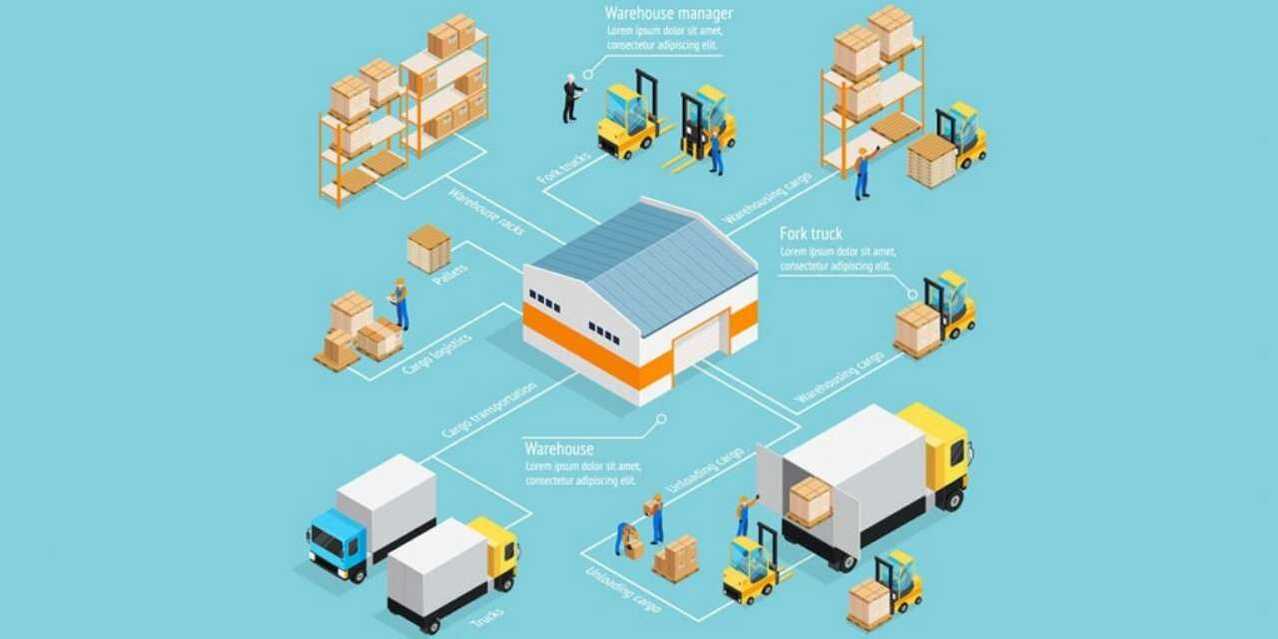Point névralgique de stockage et de manutention, votre entrepôt est une zone logistique devant répondre à certaines règles pour assurer la sécurité de vos employés, de votre matériel et de votre marchandise. Dans le secteur de la logistique et transport, les risques d’accidents liés au travail sont nombreux. Pourtant quelques règles suffisent parfois à éviter des accidents aux conséquences dramatiques.
Suivez nos conseils sur les principales règles à retenir concernant la sécurité logistique des entrepôts et apprenez à prévenir les chutes, les collisions, l’endommagement du matériel, ou encore à respecter au mieux la législation en vigueur.
Cet article a été mis à jour en octobre 2020.
Tenir un registre des matières stockées
Pourquoi est-ce aussi important de tenir un registre des matières stockées pour garantir la sécurité des activités logistiques de votre entrepôt?
Il s’agit d’une e
- The nature of the products stored;
- The location of the stored products;
- The potential “risk” of storing these products.
how do you obtain an
operating
licence?You must apply for one: the licence is subject to a number of criteria, in particular the distance between the external enclosure of the warehouse and the surrounding areas, such as
- Residential areas;
- Waterways and ponds;
- Areas of public facilities (schools, railway stations, roads, etc.).
good to know: a distance of 20m is necessary and compulsory between the walls of the warehouse and the site enclosure.
The structure of your warehouse for your logistical safety
Within the warehouse itself, whether you are a small e-commerce shop manager or a person in charge of the logistical management of a large stock, you must make sure that your plan meets the regulations relating to safety in order to prevent any accident.
The instructions to be respected with regard to the regulations relating to warehouses
The creation of a “machinery” lane to facilitate traffic must meet very precise size criteria
- A width of 6 m;
- A minimum clearance height of 4.5m;
- A slope of less than 15%.
this lane must remain free of traffic in the event of an accident such as a collapse or the presence of water to extinguish a fire. Other logistical safety criteria that must be respected to ensure optimal flows of goods and employees
- The boiler room should be placed in a dedicated room or isolated from the rest of the warehouse by a safety lock.
- Lighting must be protected from impact and overheating.
- Emergency exits should be provided every 50m.
- Air quality must be ensured by effective ventilation (ventilation outlets must be located away from living areas).
- A wastewater treatment system should be in place.
as a reminder, these safety criteria are the responsibility of the operator. To ensure that the logistics platform complies with these mandatory standards, the equipment must be regularly inspected and maintained in good condition. Therefore, train your preparers and logistics operators in good safety practices for their logistics services.
How to comply with these safety standards?
For a warehouse and logistics flow management that complies with current legislation, as a logistics provider, you must plan several elements in advance
- Check the watertightness of the soil to prevent soil and water pollution;
- Install a wastewater collection and treatment system;
- Install a ventilation system that maintains good air quality and adequate room temperature.
safe storage of your goods
The storage of your goods, like their packaging, should not be the result of chance or logistical chronology: accidents can very quickly happen in your supply chain. These are however easy to avoid by organising your storage system upstream in accordance with safety rules. Falling goods or the collapse of a shelf, taking with them several other goods or shelves by domino effect, are legion in warehouses.
 To avoid this, here are a few key rules to be observed in terms of organisation and stock management
To avoid this, here are a few key rules to be observed in terms of organisation and stock management
- The first step is to follow the standards in force, namely NF 15620 and 15629, which govern the calculation and design of a storage facility.
- Have the safety of your installations checked every year by an organisation specialising in this field.
- Ensure that all employees have access to the products.
- Comply with the legislation concerning the storage of dangerous products.
- Ensure the ergonomics of the workstation of its entire logistics team, from the supply and storage phase to the physical flow and preparation of orders.
- Set upa fire alarm and provide all the necessary fire extinguishing equipment.

Risk areas and their prevention
Some logistics areas of the warehouse are subject to more risks than others, which is why it is advisable to ensure that they are maintained but also that their managers are trained.
The pallet rack
The pallet rack is the structure where very heavy goods or objects are stored at height
- Assembled by vertical and horizontal ladders, the pallet rack is a sensitive area: if the forklift truck hits the base of the ladders, the whole stability of the system will be jeopardised.
- Care must also be taken not to overload the rack: maximum loads must be visible and displayed on each storage section.
- To counteract these risks and to detect sensitive areas and damage, the rack must be inspected daily by the operations manager.
les mauvais mouvements humains peuvent être anticipés grâce à un guide de prévention, une formation adéquate, et une gestion des opérations logistiques et transports attentive au quotidien.
Le chariot élévateur et son cariste
Ne vous fiez pas aux apparences légères et maniables de cet appareil de manutention, qui peut peser jusqu’à 6 fois le poids d’une voiture.
Conçu pour lever des charges lourdes en hauteur et les déplacer sur de courtes distances, les risques inhérents au chariot élévateur sont le renversement de l’appareil, la chute des marchandises, les virages trop brusques…
C’est pourquoi le préparateur de commandes (le cariste) responsable du chariot élévateur doit absolument avoir reçu une formation pratique et théorique au préalable (CACES).
Très sensible car très sollicitée, la zone logistique doit répondre à de nombreux critères de sécurité pour protéger ses employés et leur assurer un environnement de travail sain surtout dans les métiers de la
logisti
Conclusion: the three key points to remember
-
- Work-related accidents in a warehouse are not to be taken lightly: sometimes fatal, they are nevertheless easy to prevent by complying with legal safety standards.
- These logistics safety standards concern the environment of the warehouse, its structure, the management of flows, as well as the nature of the goods stored. Vehicle tracks, shelving, waste water treatment, ventilation, heating: all these elements must comply with the regulations in force in order to ensure the maximum safety of its employees and its overall supply chain.
- Finally, prevention and good maintenance of equipment are essential within a warehouse: when the logistics manager trains employees and logistics service providers in the right gestures to adopt, the risk of MSDs is greatly reduced.















